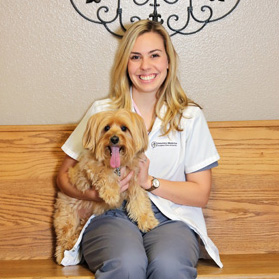The Pavement! The Pavement! The Pavement is on fire!!!


Dr. Mary Beth Tamor
It’s officially summer in south Louisiana. What does that mean? Among many fun activities such as festivals and pool parties, it also means a generous portion of HEAT. Our local average daily temperatures for July hover around the mid-90’s; these temperatures are reason for caution for both human health and also our pets’. During this time, It’s important we all take precautions to prevent overheating. Here are a few basic summer safety tips for our animal friends:
Never Leave Pets in Parked Cars
The interior of a parked vehicle can become extremely hot in a very short amount of time even with the windows cracked. Sophie may enjoy a ride in the car, but planning to run errands where she is not allowed is reason enough to leave her home this time. The following chart shows how quickly the temperatures inside your car can turn deadly.

Limit Exercise to Coolest Part of the Day
Many of us love the companionship of a jogging partner. If you decide to take CoCo for a run, tailor the length and difficulty of the workout to a cooler time of day such as first light in the morning or late in the evening or even after the sunset. This strategy will help limit the health risks such as sunburns, hot pavement, and heat stroke. Always test the road’s temperature with your own hands or walk in the grass if necessary. Pay special attention to our short-nosed friends such as Pugs, Boxers, Boston Terriers, and Bulldogs that can have difficulty breathing.
Be Aware of Humidity
Not only does the temperature affect our pets, but also the humidity, and in south Louisiana there’s plenty to go around. The method by which dogs cool off is by panting, so If the humidity is high, Duke’s panting is much less effective at cooling him, just as sweating is less effective at cooling our own bodies in high humidity. This can lead to dangerous elevations in your pet’s body temperature.
Ensure Adequate Shade and Water
Make sure Bella has easy access to both shade and water even if only outside for a short period of time. Double checking automatic water systems is essential, and adding ice to water bowls or giving other frozen treats is a simple way to encourage water intake.
Be On the Lookout For Signs of Heat Stroke
Pets most at risk for heat stroke include the very young or senior animals. Short nosed, overweight and dark or thick matted fur also increases the risk.
Some signs of heat stroke include: elevated rectal temperature, typically over 104 degrees F, altered mental behavior such as staggering or not responding to their name, dark pink to red gums which are dry and tacky to the touch, and increased breathing effort and rate. Sometimes vomiting, seizures and unconsciousness can occur.
If you are concerned your pet is suffering from heat stroke, quickly move them into the shade or air conditioned area. Apply cool water or wet towels to the head, neck and chest and bring them immediately to a veterinarian.
All of us here at Animal Care Center and Pet Care Center wish for a safe and fun-filled summer for you and your beloved pets!
